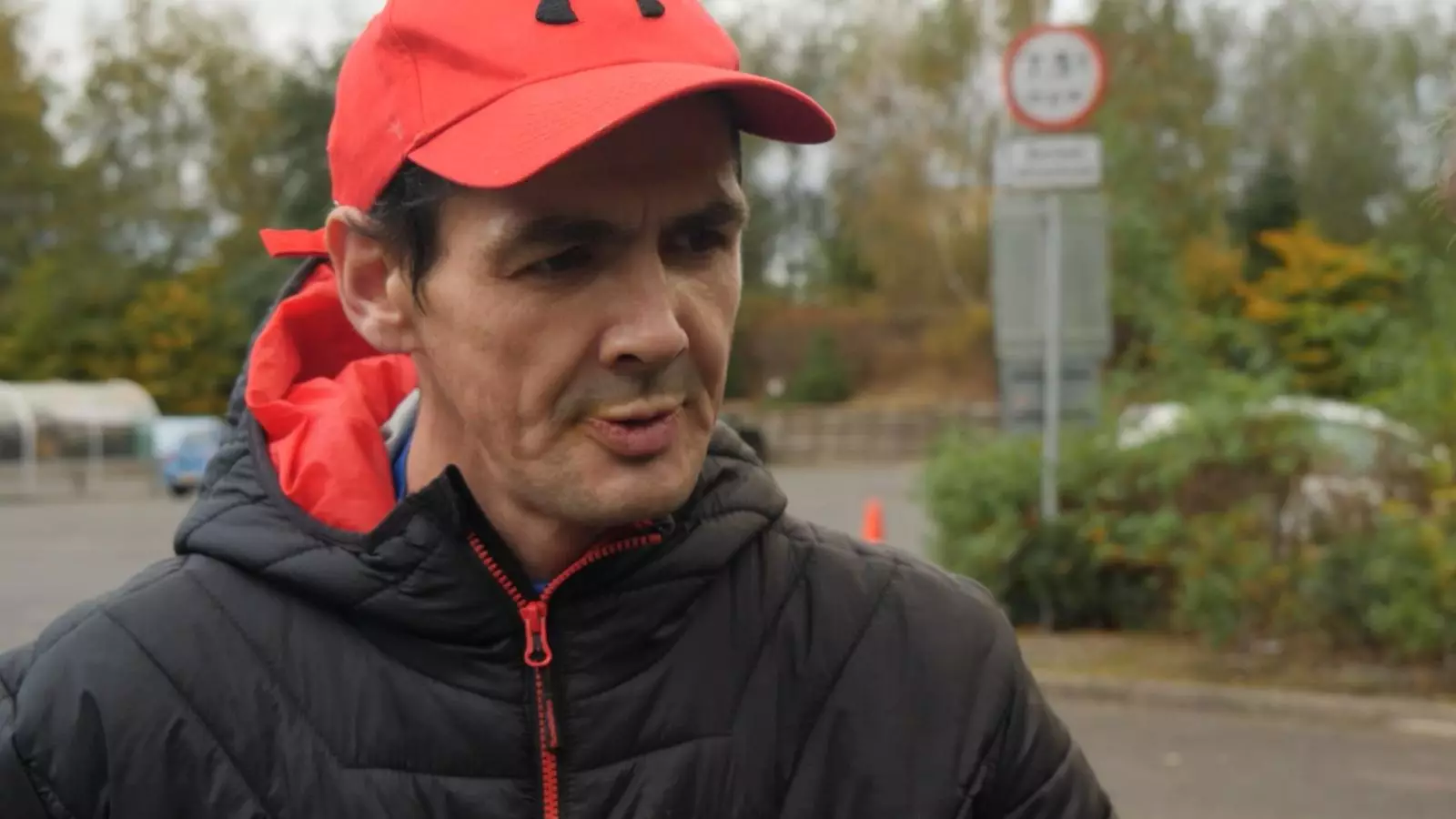In the heart of East Glasgow, the biting cold of a winter morning serves as a backdrop to a grim reality faced by many residents. Chris, a 41-year-old former painter and decorator, is not just battling the elements; he is engaged in a relentless fight against his addiction. On the streets, he brandishes a needle, the vessel of his fleeting escape from profound pain and loss. This stark portrayal underscores the tragic circumstances that often lead individuals into the depths of substance dependency. Chris’ journey into darkness began with the murder of his mother in 2007, reflecting how traumatic life events can push individuals toward desperate measures.
Chris’s urgency is palpable as he shouts about the quantity of heroin he has acquired for a minimal price. His behavior not only illustrates a disturbing normalization of drug use in his environment but also points to systemic failures in addressing the underlying issues that plague those caught in the cycle of addiction. The makeshift drug den, hidden away in a supermarket parking lot, is a testament to the lengths individuals will go to conceal and fulfill their cravings, at the expense of their health and dignity.
As Chris prepares to inject himself, he engages in a ritual that speaks to his current state of mind—distraught, yet driven by an insatiable need for relief. The surroundings, riddled with discarded needles and paraphernalia, evoke a sense of horror and neglect. Despite the filth, Chris remains unfazed, revealing a troubling detachment from the risks of infection and disease that permeate his daily existence. His admission of the degrading nature of his situation is a stark contrast to the bravado he displays, emphasizing the internal struggle many users face as they cling to the hope of fleeting euphoria amid relentless despair.
In juxtaposition, a new government facility is set to open nearby, designed to provide a safer environment for drug consumption. While this place promises a semblance of medical oversight, it emerges amid widespread skepticism from those like Chris. Although officials promote these facilities as a means to save lives and reduce the stigma surrounding addiction, individuals entrenched in addiction often grapple with issues of trust. Chris conveys this uncertainty eloquently, suggesting that many view such initiatives with suspicion rather than optimism.
Scotland bears the unfortunate title of having the highest drug death rates in Europe. With over 1,172 lives lost in the previous year alone, it is evident that the issue of drug addiction requires urgent and innovative solutions. Glasgow stands as the epicenter of this crisis, and the government’s planned safer consumption room is a pivotal part of its strategy. Yet, this approach is not without controversy. Critics question whether taking advantage of international success stories can translate to success in the UK context.
The political dimension adds another layer of complexity, with funding for such initiatives often pitted against cuts in other public services. The commitment of £2.3 million ring-fenced for drug pilot schemes amidst budgetary constraints raises concerns about prioritization of resources. The challenge lies not merely in establishing these consumption rooms but in proving their effectiveness in curbing drug-related deaths while adhering to ethical considerations surrounding addiction treatment.
Furthermore, opponents argue that legitimizing drug use, even in a controlled environment, may inadvertently glamorize the risks associated with substances. The UK’s Home Office has previously stated there exists “no safe way to take illegal drugs,” reinforcing the perception that any attempt at harm reduction could dilute the message on drug dangers.
As Chris contemplates the potential of this new facility to provide a lifeline, it becomes evident that the gaps between policy and reality remain vast. Even if addiction support services improve, for many, like Chris, it may be too late. When posed with the question of whether a fatal dose might offer a form of relief, he responds with resignation, highlighting the tragic normalization of death that has seeped into the lives of those in the grips of addiction.
In essence, the intersection of despair, addiction, policy, and personal outcomes paints a troubling picture of life in East Glasgow. For every Chris, there are countless others ensnared in a similar struggle, exemplifying the need for comprehensive strategies that prioritize compassion, understanding, and effective treatment. The opening of the safer drug consumption room may represent a fragile hope, but ultimately, its success will hinge on rebuilding trust and addressing the multifaceted realities of addiction.


Leave a Reply